Research
We investigate interfacial charge transfer and energy transfer in hybrids containing low dimensional semiconductor nanomaterials like colloidal quantum dots, 2D van Der Waals materials, perovskite quantum dots for potential application in solar energy conversion, photodetectors, solid state light emitting or biosensing. We develop assembly methods to create nanohybrids with controlled optical and electronic behavior, for example regulated charge transfer, regulated energy transfer or tunable plasmon-assissted emission. Some examples highlighting our recent published work in this field are shown below.
Interfacial Charge and Energy Transfer in Low Dimensional Semiconductor Nanomaterials
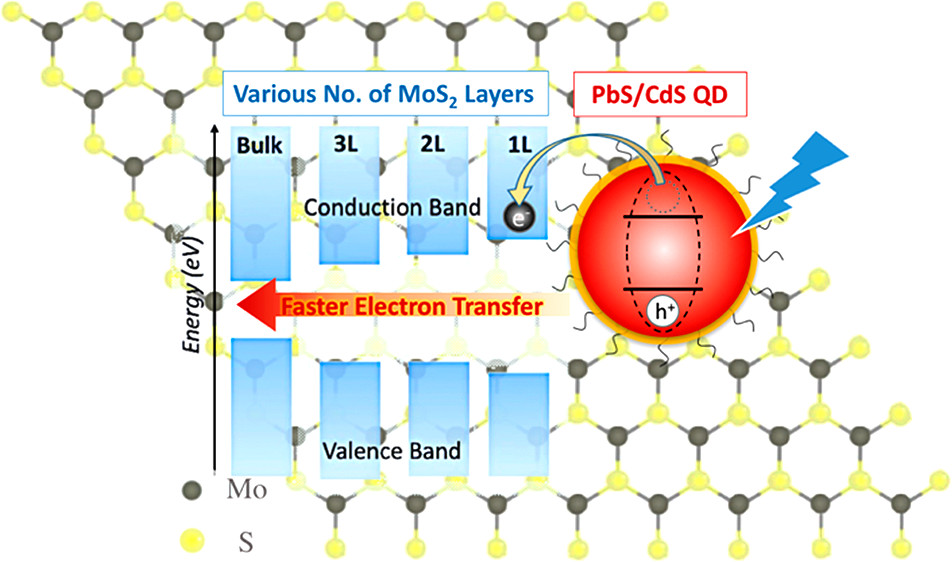
Characterization of layer-dependent electron transfer in PbS/CdS quantum dot - atomically thin MoS2 hybrids (ACS Nano 2019)
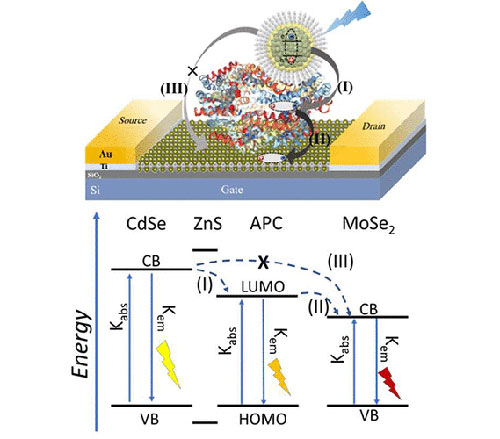
Demonstration of a biotic-abiotic nanohybrid photodetector based on a light harvesting protein, quantum dots and 2D molybdenum diselenide enterteining cascaded FRET (ACS Photonics 2019)
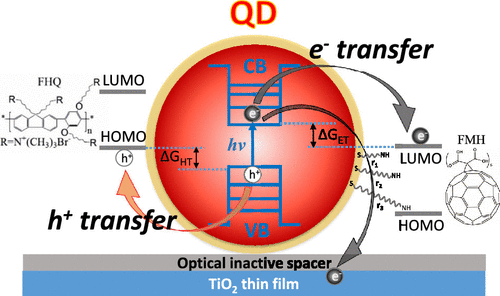
Our group publishes a perspective article on nanoscale charge transfer with quantum dots reflecting our contribution to this field for the past decade (ACS Omega 2019)
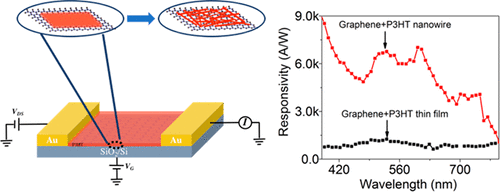
Simple self-assembly method of a conductive polymer on top of single layer graphene results in photodetectors with dramatically improved photoresponse (ACS Photonics 2018)
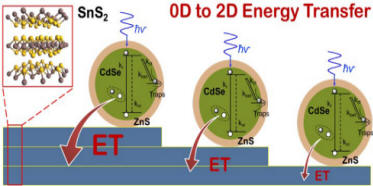
In a recent study we assembled quantum dots with layered tin disulfide to obtain 0D-2D hybrids with improved light harvesting properties. We found these nanomaterials communicate by energy transfer, with the rate of this process increasing with the increase f tin disulfide layers (ACS Nano2016). Using this particular 0D-2D hybrid we built field effect transistors with imroved photocurrent and spectral photoresponsivity (APL 2016).
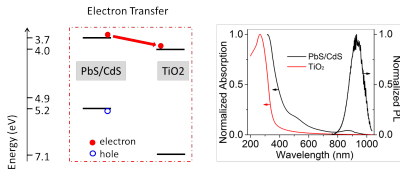
We have been successful in detecting and monitoring signals from individual lead sulfide-cadmium sulfide nanocrystals undergoing electron transfer with titanium oxide and we have explored blinking of such nanocrystals to understand interfacial electron transfer in these hybrids. (Nanoscaale 2017).
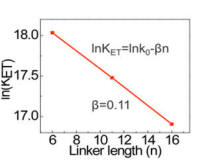
In this work we patented a surface-based self-assembly method to produce donor-bridge-acceptor Qdot-fullerene dimers with varying bridge length and varying Qdot core size (bandgap), achieving tunable electron transfer (ET) through self-assembly and bandgap engineering. Angew.Chem.Intl.Ed.2011, 2012

In collaboration with Prof. Mathew Maye's group at Syracuse University, we produced a series of Qdot-conjugated polymer hybrids with tunable hole transfer rate by using core/shell Qdots with varying shell thickness andconnecting the components by electrostatic binding. (ACS-Nano 2012, Chem.Comm.2014).
Plasmonic QDs
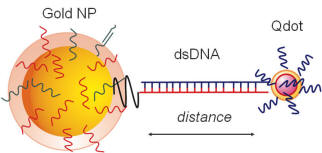

In these studies done in collaboration with Prof. Gang (CFN-BNL/Columbia U.), we demonstrated how DNA mediated self-assembly allows the control of photoluminescence output in plasmonic gold NP-Qdot dimers and gold NP-multiQdots superstructures (ChemComm 2010, ACS-Nano 2015).




